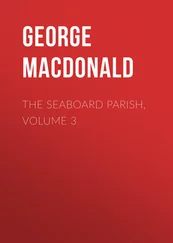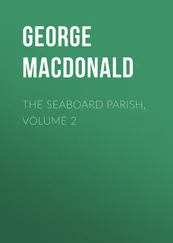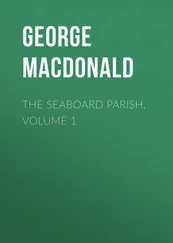George Warburton - The Conquest of Canada, Vol. 1
Здесь есть возможность читать онлайн «George Warburton - The Conquest of Canada, Vol. 1» — ознакомительный отрывок электронной книги совершенно бесплатно, а после прочтения отрывка купить полную версию. В некоторых случаях можно слушать аудио, скачать через торрент в формате fb2 и присутствует краткое содержание. Жанр: foreign_prose, История, foreign_edu, foreign_antique, на английском языке. Описание произведения, (предисловие) а так же отзывы посетителей доступны на портале библиотеки ЛибКат.
- Название:The Conquest of Canada, Vol. 1
- Автор:
- Жанр:
- Год:неизвестен
- ISBN:нет данных
- Рейтинг книги:5 / 5. Голосов: 1
-
Избранное:Добавить в избранное
- Отзывы:
-
Ваша оценка:
- 100
- 1
- 2
- 3
- 4
- 5
The Conquest of Canada, Vol. 1: краткое содержание, описание и аннотация
Предлагаем к чтению аннотацию, описание, краткое содержание или предисловие (зависит от того, что написал сам автор книги «The Conquest of Canada, Vol. 1»). Если вы не нашли необходимую информацию о книге — напишите в комментариях, мы постараемся отыскать её.
The Conquest of Canada, Vol. 1 — читать онлайн ознакомительный отрывок
Ниже представлен текст книги, разбитый по страницам. Система сохранения места последней прочитанной страницы, позволяет с удобством читать онлайн бесплатно книгу «The Conquest of Canada, Vol. 1», без необходимости каждый раз заново искать на чём Вы остановились. Поставьте закладку, и сможете в любой момент перейти на страницу, на которой закончили чтение.
Интервал:
Закладка:
139
See Appendix, No. XX. (vol. II.)
140
"The Falls of the Rideau are about fifty feet in height and 300 in breadth, being, at the time we saw them, more magnificent than usual, by reason of the high state of the waters. It is from their resemblance to a curtain that they are distinguished by the name of Rideau, and they also give this name to the river that feeds them, which again lends the same appellation to the canal that connects the Ottawa with Lake Ontario."—Simpson, vol. i., p. 16.
141
Modern alluvial accumulations are rapidly increasing on some points of this coast, owing to the enormous mass of fresh water, charged with earthy matter, that here mingles with the sea. The surface of the water at the mouth of the St. Lawrence, where the depth is 100 fathoms, is stated by Bayfield to be turbid from this cause: yet that this discoloration is superficial is evident, for in the wake of a ship moving through the turbid surface, the clear blue waters of the sea are seen below.
142
"The neighborhood of Quebec, as well as Canada in general, is much characterized by bowlders, and the size and position of some of them is very striking. There are two crowning the height which overlooks the domain farm at Beauport, whose collective weight is little short, by computation, of forty tons. The Heights of Abraham also are, or rather were, crowded with them; and it should never be forgotten that it was upon one of these hoary symbols, the debâcles of the deluge, as they are supposed to be, that the immortal and mortal parts of two heroes separated from each other. It has often occurred to us, that one of the most suitable monuments to the memory of Wolfe and Montcalm might have been erected with these masses, in the form of a pyramid or pile of shot, instead of burying them, as in many instances has been done, in order to clear the ground."— Picture of Quebec , p. 456.
143
Gray says, in 1809, that "no coal has ever yet been found in Canada, probably because it has never been thought worth searching after. It is supposed that coal exists in the neighborhood of Quebec; at any rate, there can be no doubt that it exists in great abundance in the island of Cape Breton, which may one day become the Newcastle of Canada."—P. 287.
"No idea can be formed of the importance of the American coal seams until we reflect on the prodigious area over which they are continuous. The elliptical area occupied by the Pittsburg seam is 225 miles in its largest diameter, while its maximum breadth is about 100 miles, its superficial extent being about 14,000 square miles.
"The Apalachian coal-field extends for a distance of 720 miles from northeast to southwest, its greatest width being about 180 miles.
"The Illinois coal-field is not much inferior in dimensions to the whole of England."—Lyell's America , vol. ii., p. 31.
"It was the first time I had seen the true coal in America, and I was much struck with its surprising analogy in mineral and fossil characters to that of Europe; … the whole series resting on a coarse grit and conglomerate, containing quartz pebbles, very like our millstone grit, and often called by the Americans, as well as the English miners, the 'Farewell Rock,' because, when they have reached it in their borings, they take leave of all valuable fuel."— Ibid. , vol. i., p. 61.
144
See Appendix, No. XXI. (vol. II.)
145
Professor Kalm visited the iron-works of St. Maurice in 1748, eleven or twelve years after their first establishment. "The iron-work, which is the only one in the country, lies three miles to the west of Trois Rivières. Here are two great forges, besides two lesser ones to each of the great ones, and under the same roof with them. The bellows were made of wood, and every thing else as in the Swedish forges. The ore is got two and a half miles from the iron-works, and is carried thither on sledges. It is a kind of moor-ore (Tophus Tubalcaini: Linn. Syst. Nat. , lib. iii., p. 187, note 5), which lies in veins within six inches or a foot from the surface of the ground. Each vein is from six to eighteen inches deep, and below it is a white sand. The veins are surrounded with this sand on both sides, and covered at the top with a thin mold. The ore is pretty rich, and lies in loose lumps in the veins of the size of two fists, though there are a few which are near eighteen inches thick. These lumps are full of holes which are tilled with ocher. The ore is so soft that it may be crushed between the fingers. They make use of a gray limestone, which is broke in the neighborhood, for promoting the fusibility of the ore; to that purpose they likewise employ a clay marl, which is found near this place. Charcoals are to be had in great abundance here, because the country round this place is covered with wood which has never been stirred. The charcoals from evergreen trees, that is, from the fir kind, are best for the forge, but those of deciduous trees are best for the smelting-oven. The iron which is here made was to me described as soft, pliable, and tough, and is said to have the quality of not being attacked by rust so easily as other iron. This iron-work was first founded in 1737 by private persons, who afterward ceded it to the king; they cast cannon and mortars here of different sizes, iron stoves, which are in use all over Canada, kettles, &c. They have likewise tried to make steel here, but can not bring it to any great perfection, because they are unacquainted with the best method of preparing it. Here are many officers and overseers, who have very good houses built on purpose for them. It is agreed on all hands that the resources of the iron-work do not pay the expenses which the king must every year be at in maintaining it. They lay the fault on the bad state of population, and say that the few inhabitants in the country have enough to do with agriculture, and that it therefore costs great trouble and large sums to get a sufficient number of workmen. But, however plausible this may appear, yet it is surprising that the king should be a loser in carrying on this work, for the ore is easily broken, being near the iron-work, and very fusible. The iron is good; and this is, moreover, the only iron-work in the country, from which every body must supply himself with tools, and what other iron he wants. But the officers and servants belonging to the iron-work appear to be in very affluent circumstances. A river runs down from the iron-work into the River St. Lawrence, by which all the iron can be sent in boats throughout the country at a low rate."—Kalin in Pinkerton, vol. xiii., p. 631.
"M. Dantic, after a number of experiments to class the different kinds of iron, discovered that the iron of Styria was the best, and that the iron of North America, of Danemara in Sweden, of Spain, Bayonne, Roussillon, Foix, Berri, Thierache in Sweden, the communes of France, and Siberia, was the next class."—Abbé Raynal, vol. iii., p. 268.
Weld and Heriot mention that the bank of iron ore at the forges of St. Maurice was nearly exhausted in their time; new veins, however, have been since discovered.
Charlevoix says, in 1720: "Il est certain que ces mines de fer, que l'œil perçant de M. Colbert et la vigilance de M. Talon avoit fait découvrir, après avoir presqú entièrement disparu pendant plus de soixante dix ans, viennent d'être retrouvées par les soins de ceux qui occupent aujourd'hui leur place."—Charlevoix, tom. ii., p. 166.
146
Henry and others speak of a rock of pure copper, from which the former out off 100 lbs. weight. W. Schoolcraft examined the remainder of the mass in 1820, and found it of irregular shape; in its greatest length three feet eight inches, greatest breadth three feet four inches, making about eleven cubic feet, and containing, of metallic matter, about 2200 lbs.; but there were many marks of chisels and axes upon it, as if a great deal had been carried off. The surface of the block, unlike most metals which have suffered a long exposure to the atmosphere, presents a metallic brilliancy.—Martin's History of Canada , p. 175.
Читать дальшеИнтервал:
Закладка:
Похожие книги на «The Conquest of Canada, Vol. 1»
Представляем Вашему вниманию похожие книги на «The Conquest of Canada, Vol. 1» списком для выбора. Мы отобрали схожую по названию и смыслу литературу в надежде предоставить читателям больше вариантов отыскать новые, интересные, ещё непрочитанные произведения.
Обсуждение, отзывы о книге «The Conquest of Canada, Vol. 1» и просто собственные мнения читателей. Оставьте ваши комментарии, напишите, что Вы думаете о произведении, его смысле или главных героях. Укажите что конкретно понравилось, а что нет, и почему Вы так считаете.












